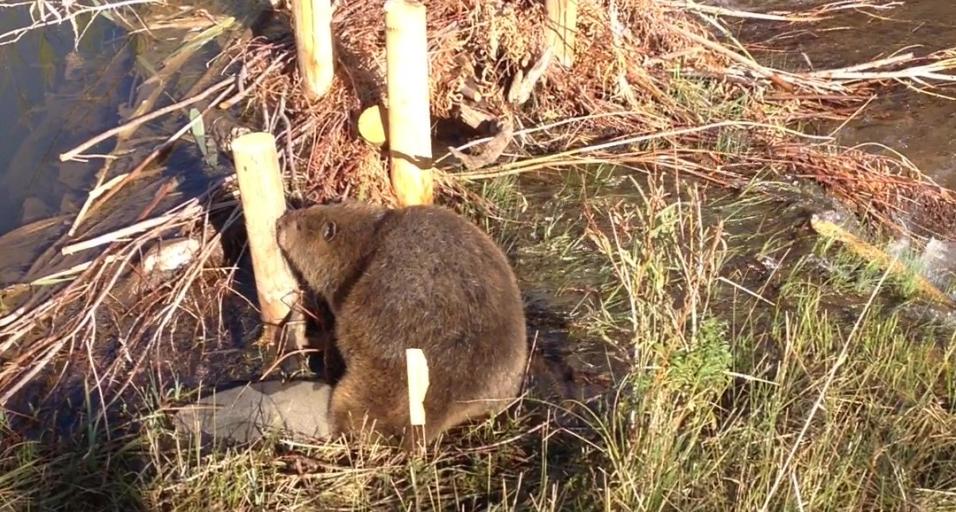This fall, Game and Fish worked with landowners in the Lander Region to relocate two families of beaver that were cutting down trees in urban areas and repeatedly plugging culverts. Beaver activity becomes more pronounced in the fall as the furry aquatic mammals prepare for winter by cutting down trees to repair dams and to store as food.
One family of six beaver were moved to The Nature Conservancy’s Red Canyon Ranch where beaver dam analogs (BDAs) were constructed earlier this year. These manmade beaver dams mimic the positive effects of natural beaver dams when there are no beaver present. In this case, they provided immediate cover from predators for the relocated beavers and a few beavers have taken up residence and started building upon the BDAs themselves.
If necessary, beaver relocations are usually done in August and September because the kits (young) are old enough and all the beavers are more likely to stay where you put them. Game and Fish always attempts to relocate the family group to the same location and works with landowners who want beaver on their property.
Many people seek out beaver for the positive effects they have on the landscape and other wildlife. As beavers continue to build dams and pond water is created, riparian vegetation is improved along the stream, which will stabilize the stream banks and create better habitat for fish and wildlife. Beaver dams create ponds that allow beavers to escape predators, but these ponds are also productive wetlands that many birds, deer, moose, and other wildlife depend on. They also increase habitat diversity for trout, recharge groundwater, and filter sediment and nutrients from water.
Beaver Relocations Help Everyone

